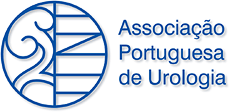Predicting Factors of Unexpected Hospital Return Following Transurethral Resection of Bladder Tumor
DOI:
https://doi.org/10.24915/aup.35.3-4.89Keywords:
Cystoscopy, Patient Readmission, Postoperative Complications, Risk Factors, Urinary Bladder Neoplasms/surgeryAbstract
Introduction: We intend to evaluate which factors are associated with unexpected hospital return (UHR) following transurethral resection of bladder tumor (TURBT).
Material and Methods: Exploratory cross-sectional study of all TURBTs performed between 2015-2016.
Results: A total of 499 TURBTs were performed in 389 patients. Within 30 days of surgery, there was an UHR in 16.8% of cases, 4.2% demanding hospital readmission. UHR occurred mainly because of urinary tract infection (UTI) (38.1%). There was a significantly increased UHR in cases of primary tumour, larger tumor size, incomplete tumour resection, need for additional endoscopic procedures, higher surgery time, longer urethral catheterization, higher values of preoperative C-reactive protein (CRP) and lower preoperative hemoglobin. In a multivariate logistic regression analysis, we found a strong and independent association between UHR and length of surgery (OR = 1.016), duration of urethral catheterization (OR = 1.059) and preoperative CRP (OR = 1.131).
Conclusion: Early UHR after programmed TURBT occurred in almost 17% of cases, mainly because of UTI. For each additional minute of surgery, each additional day of UC and each additional unit (mg/dL) of preoperative CRP, there is an increased risk of UHR in 1.6%, 5.9% and 13.1% respectively. As CRP value is not a modifiable variable, it is up to the surgeon to optimize the operative time and mainly the length of UC in order to reduce the probability of UHR.
Downloads
References
2016.05.041
2. Avallone MA, Sack BS, El-Arabi A, Charles DK, Herre WR, Radtke AC, et al. Ten-year review of perioperative complications after transurethral resection of bladder tumors: analysis of monopolar and plasmakinetic
bipolar cases. J Endourol. 2017;31:767–73. doi:10.1089/end.2017.0056
3. Richards KA, Smith ND, Steinberg GD. The importance of transurethral resection of bladder tumor in the management of nonmuscle invasive bladder cancer: A systematic review of novel technologies. J Urol.
2014;191:1655-64. doi: 10.1016/j.juro.2014.01.087.
4. Ghali F, Moses RA, Raffin E, Hyams ES. What factors are associated with unplanned return following transurethral resection of bladder tumor? An analysis of a large single institution’s experience. Scand J Urol.
2016;50:370–3. doi: 10.1080/21681805.2016.1201856.
5. Rambachan A, Matulewicz RS, Pilecki M, Kim JYS, Kundu SD. Predictors of readmission following outpatient urological surgery. J Urol. 2014;192:183–8. doi: 10.1016/j.juro.2013.12.053.
6. Cornu JN, Herrmann T, Traxer O, Matlaga B. Prevention and management following complications from endourology procedures. Eur Urol Focus. 2016;2:49-59. doi: 10.1016/j.euf.2016.03.014.
7. Gregg JR, McCormick B, Wang L, Cohen P, Sun D, Penson DF, et al. Short term complications from transurethral resection of bladder tumor. Can J Urol. 2016;23:8198–203.
8. Hollenbeck BK, Miller DC, Taub D, Dunn RL, Khuri SF, Henderson WG, et al. Risk factors for adverse outcomes after transurethral resection of bladder tumors. Cancer. 2006;106:1527–35.
9. Matulewicz RS, Sharma V, McGuire BB, Oberlin DT, Perry KT, Nadler RB. The effect of surgical duration of transurethral resection of bladder tumors on postoperative complications: An analysis of ACS NSQIP data.
Urol Oncol Semin Orig Investig. 2015;33:338.e19-338.e24. doi: 10.1016/j.urolonc.2015.05.011
10. Patel HD, Ball MW, Cohen JE, Kates M, Pierorazio PM, Allaf ME. Morbidity of urologic surgical procedures: An analysis of rates, risk factors, and outcomes. Urology. 2015;85:552–60. doi: 10.1016/j.urology.2014.11.034.
11. Twersky R, Fishman D, Homel P. What happens after discharge? Return hospital visits after ambulatory surgery. Anesth Analg. 1997;84:319–24.
12. Collado a, Chéchile GE, Salvador J, Vicente J. Early complications of endoscopic treatment for superficial bladder tumors. J Urol. 2000;164:1529–32.
13. Nieder AM, Meinbach DS, Kim SS, Soloway MS. Transurethral bladder tumor resection: intraoperative and postoperative complications in a residency setting. J Urol. 2005;174:2307–9.
14. Valerio M, Cerantola Y, Fritschi U, Hubner M, Iglesias K, Legris AS, et al. Comorbidity and nutritional indices as predictors of morbidity after transurethral procedures: A prospective cohort study. J Can Urol Assoc.
2014;8:E600–4. doi: 10.5489/cuaj.1848.
15. Mezei G, Chung F. Return hospital visits and hospital readmissions after ambulatory surgery. Ann Surg. 1999;230:721–7.




